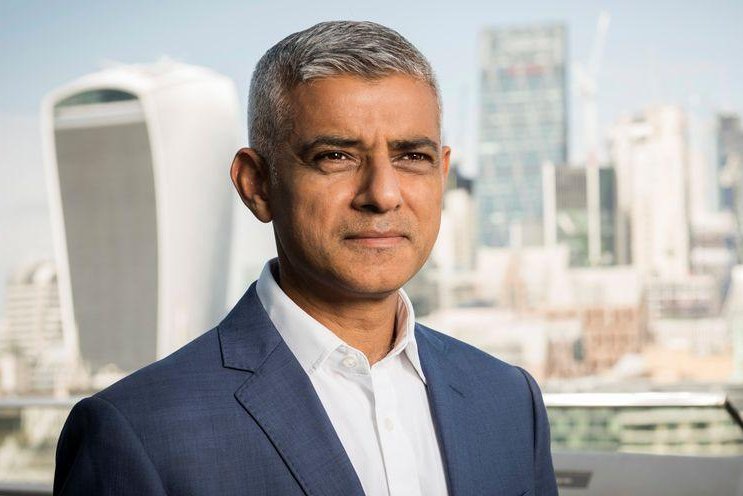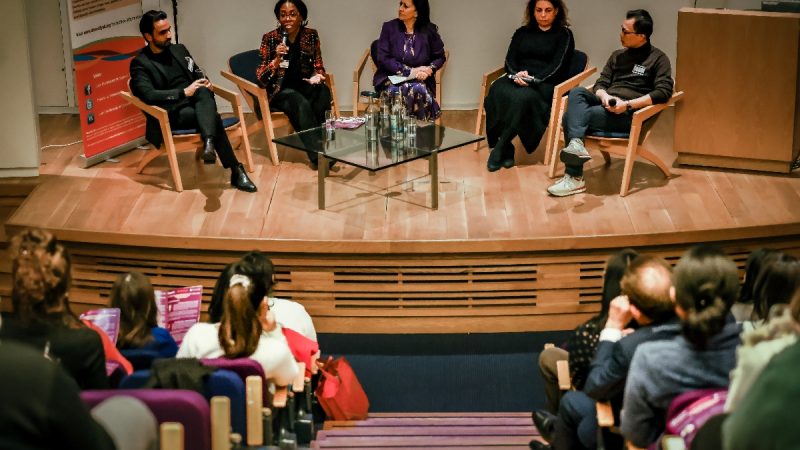Mayor of London publishes gender, ethnicity & disability pay gap data

Today the Mayor of London, Sadiq Khan has published the latest ethnicity and gender pay gap data for the entire Greater London Authority (GLA) Group, including Transport for London, the Metropolitan Police and London Fire Brigade. For the first time, the entire GLA Group has also published disability pay gap data and an intersectional analysis showing pay gaps are larger at the GLA for Black, Asian and minority ethnic men than Black, Asian and minority ethnic women.
Lack of ethnic minority staff in senior positions
One of the reasons behind the ethnicity pay gaps is the lack of Black, Asian and minority ethnic staff in already filled senior positions – it is not that White and Black, Asian and minority ethnic people are being paid differently for the same roles. Likewise, one of the reasons gender pay gaps exist in some organisations in the GLA Group is that there are not enough women in senior roles – it is not because women are being paid less than men for doing the same job.
Since Sadiq was first elected Mayor in 2016, the GLA has taken significant action toward improving Black, Asian and minority ethnic representation at City Hall. Since 2018, the proportion of Black, Asian and minority ethnic staff at the GLA has increased from 24 per cent to 31 per cent with the organisation committed to a workforce that is fully reflective of London’s diversity. When Sadiq was first elected in 2016, just 27 per cent of new staff appointed at City Hall were from Black, Asian and minority ethnic backgrounds. This figure increased substantially to 44 per cent in 2021.
The use of grading systems for roles across the GLA Group means that people receive equal pay for the same role, whatever their background. The issue is underrepresentation of women, Black, Asian and minority ethnic and disabled people in more senior roles, the vast majority of whom have been in their posts before Sadiq first became Mayor in 2016.
Sadiq has been determined to tackle structural and institutional racism across London.
He introduced gender pay gap reporting earlier than required and was one of the first in the country to introduce ethnicity pay gap reporting. He is now leading the way by publishing disability pay gap data.
The majority of the organisations within the GLA Group have Action Plans in place that set out how they intend to reduce pay gaps. These plans are published on their websites.
This has helped reduce the GLA gender pay gap from 6.14 per cent when the first comparable data was reported in 2017 to 2.08 per cent in 2021 and the GLA ethnicity pay gap from 15.71 per cent in 2017 to 11.10 per cent in 2021.
The Mayor of London, Sadiq Khan, said: “Your gender, ethnicity or disability should have no bearing on what you can achieve. I am determined that the GLA Group leads from the front when it comes to being diverse and inclusive organisations.
“At City Hall and across the GLA Group we’ve been working hard to drive down Black, Asian and minority ethnic, gender pay gaps, and some progress has been made – but I’m clear that it’s still not enough and we need to redouble our efforts to make these disparities a thing of the past. I am also pleased that the GLA Group has, for the first time, published disability pay gap data so that we can ensure those with a disability are supported to have the same opportunities others do.
“The best way that the GLA can serve our great city is if it is representative of Londoners.”
The pay gap data paints a mixed picture and highlights that despite some progress, there is still much work to do to eradicate these disparities. All pay gap figures below are calculated using the median average (the middle value of all salaries at each organisation).
GLA Group Black, Asian and minority ethnic pay gap data (median)
As of March 31 2021, White and those of Black, Asian and minority ethnic origin staff in the main GLA Group organisations were paid on average the following:
· Greater London Authority
White employees: £26.64 per hour, Black, Asian and minority ethnic employees: £23.69 per hour – an ethnicity pay gap of 11.1 per cent (down from 11.30 per cent in 2020).
The intersectional analysis data shows pay gaps are larger at the GLA for Black, Asian and minority ethnic men than Black, Asian and minority ethnic women.
White female employees: £26.12 per hour, Black, Asian and minority ethnic female employees: £23.99 per hour – an ethnicity pay gap of 8.14 per cent (down from 8.70 per cent in 2020).
White male employees: £27.72 per hour, Black, Asian and minority ethnic male employees: £23.58 per hour – an ethnicity pay gap of 14.92 per cent (up from 13.01 per cent in 2020).
· Transport for London
White employees: £30.75 per hour, Black, Asian and minority ethnic employees: £27.74 per hour – an ethnicity pay gap of 9.8 per cent (up from 9.6 per cent in 2020).
· Metropolitan Police Service
White employees: £23.03 per hour, Black, Asian and minority ethnic employees: £20.23 per hour – an ethnicity pay gap of 12.16 per cent (down from 13.76 per cent in 2020).
· London Fire Brigade
White employees: £18.03 per hour, Black, Asian and minority ethnic employees: £17.96 per hour – an ethnicity gap of 0.4 per cent (up from no pay gap in 2020).
· Crossrail
White employees: £32.53 per hour, Black, Asian and minority ethnic employees: £22.49 per hour – an ethnicity gap of 30.9 per cent
The figures for GLA Group organisations with fewer than 250 employees (where any pay gap is less statistically significant) are as follows.
· Mayor’s Office for Policing and Crime
White employees: £27.44 per hour, Black, Asian and minority ethnic employees: £25.25 per hour – an ethnicity pay gap of 7.98 per cent (up from 6.98 per cent in 2020).
· London Legacy Development Corporation
White employees: £31.54 per hour, Black, Asian and minority ethnic employees: £21.48 per hour – an ethnicity pay gap of 31.90 per cent (up from 31.4 per cent in 2020).
· Old Oak and Park Royal Development Corporation
White employees: £29.60 per hour, Black, Asian and minority ethnic employees: £25.63 per hour – an ethnicity pay gap of 13.41 per cent (up from 5.24 per cent in 2020).
While most of the ethnicity pay gaps are significantly below the London average of 28.2 per cent in 2019, which is the highest for any region in the UK, the size of many of the pay gaps in many of the main GLA Group organisations shows that there is still much work to be done.
Organisations across the GLA Group have taken their own steps to address the pay gap. This includes TfL working with colleagues, Staff Network Groups, trade unions and other stakeholders to develop a new Action on Inclusion strategy as well as producing a new four-year Pay Gap Action Plan, which will set out plans to reduce gender and ethnicity pay gaps. Other organisations are doing a number of actions such as increasing the diversity of interview panels during the recruitment process, working with City Hall’s Black, Asian and minority ethnic Staff Network to understand the needs, concerns and experiences of the organisation’s employees, and signing up to Business In The Community’s Race at Work Charter – which contains seven measures to tackle inequality in the workplace.
GLA Group Gender pay gap data (median)
As of March 31 2021 men and women working in the main GLA group organisations were paid on average the following:
· Greater London Authority
Male employees: £26.64 per hour, female employees: £26.09 per hour – a gender pay gap of 2.08 per cent (down from 3.87 per cent in 2020).
· Transport for London
Male employees: £30.42 per hour, female employees: £24.91 per hour – a gender pay gap of 18.11 per cent (down from 18.8 per cent in 2020).
· Metropolitan Police Service
Male employees: £23.10 per hour, female employees: £20.87 per hour – a gender pay gap of 9.65 per cent (down from 10.6 per cent in 2020).
· London Fire Brigade
Male employees: £17.98 per hour, female employees: £18.76 per hour – a gender pay gap of -4.36 per cent (up from -2.7 per cent in 2020).
· Crossrail
Male employees: £32.24 per hour, female employees £21.36: per hour – a gender pay gap of 33.8 per cent.
The figures for GLA Group organisations with fewer than 250 employees (where any pay gap is less statistically significant) are as follows.
· Mayor’s Office for Policing and Crime
Male employees: £27.44 per hour, female employees: £25.83 per hour – a gender pay gap of 5.87 per cent (down from 6.48 per cent in 2020).
· London Legacy Development Corporation
Male employees: £32.39 per hour, female employees: £25.98 per hour – a gender pay gap of 19.79 per cent (up from 17.70 per cent in 2020).
· Old Oak and Park Royal Development Corporation
Male employees: £29.60 per hour, female employees: £28.40 per hour – a gender pay gap of 4.05 per cent (down from 5.24 per cent in 2020).
The majority of the organisations have made progress in the last six years since Sadiq became Mayor, with a gender pay gap lower than both the London average of 16.2 per cent and the national average of 15.4 per cent.
GLA Group Disability pay gap data (median)
The GLA Group has also published the Disability Pay Gap data for the first time. While, like the ethnicity pay gap, this is not currently a statutory requirement, the Mayor wants to lead by example to help tackle pay inequality across the capital. In 2019, the UK disability pay gap for all workers was 14.8 per cent and 16.6 per cent in London.
As at 31 March 2021, people working in the main GLA Group organisations were paid on average the following:
· Greater London Authority
Disabled employees: £23.88 per hour, not disabled employees: £26.12 per hour – a disability pay gap of 8.59 per cent.
· Transport for London
Disabled employees: £26.79 per hour, not disabled employees: £28.28 per hour – a disability pay gap of 2.70 per cent.
· Metropolitan Police Service
Disabled employees: £23.05 per hour, not disabled employees: £23.25 per hour – a disability pay gap of 0.88 per cent.
· London Fire Brigade
Disabled employees: £18.84 per hour, not disabled employees: £17.99 per hour – a disability pay gap of -4.77 per cent.
· Crossrail
A disability pay gap of -41.3 per cent. Salary data is redacted to preserve the anonymity of employees who might be identified by the data.
The figures for GLA Group organisations with fewer than 250 employees (where any pay gap is less statistically significant) are as follows:
· Old Oak Common and Park Royal Development Corporation
Disabled employees: £38.07 per hour, not disabled employees: £30.04 per hour – a disability pay gap of -26.7 per cent.
· Mayor’s Office for Policing and Crime
Disabled employees: £21.29 per hour, not disabled employees: £26.54 per hour – a disability pay gap of 19.8 per cent.
· London Legacy Development Corporation
Disabled employees: £27.04 per hour, not disabled employees: £30.79 per hour – a disability pay gap of 12.2 per cent.
Further information
GLA Group Pay Gap report: https://www.london.gov.uk/publications/gla-pay-gap-report-2021
GLA Group Pay Gap action plan: https://www.london.gov.uk/publications/gla-pay-gap-action-plan-2021
National gender pay gap data source –
https://data.london.gov.uk/economic-fairness/labour-market/gender-pay-gap/
National ethnicity pay gap data source –
https://data.london.gov.uk/economic-fairness/labour-market/ethnicity-pay-gap/
National disability pay gap data source –
https://data.london.gov.uk/economic-fairness/labour-market/disability-pay-gap/




